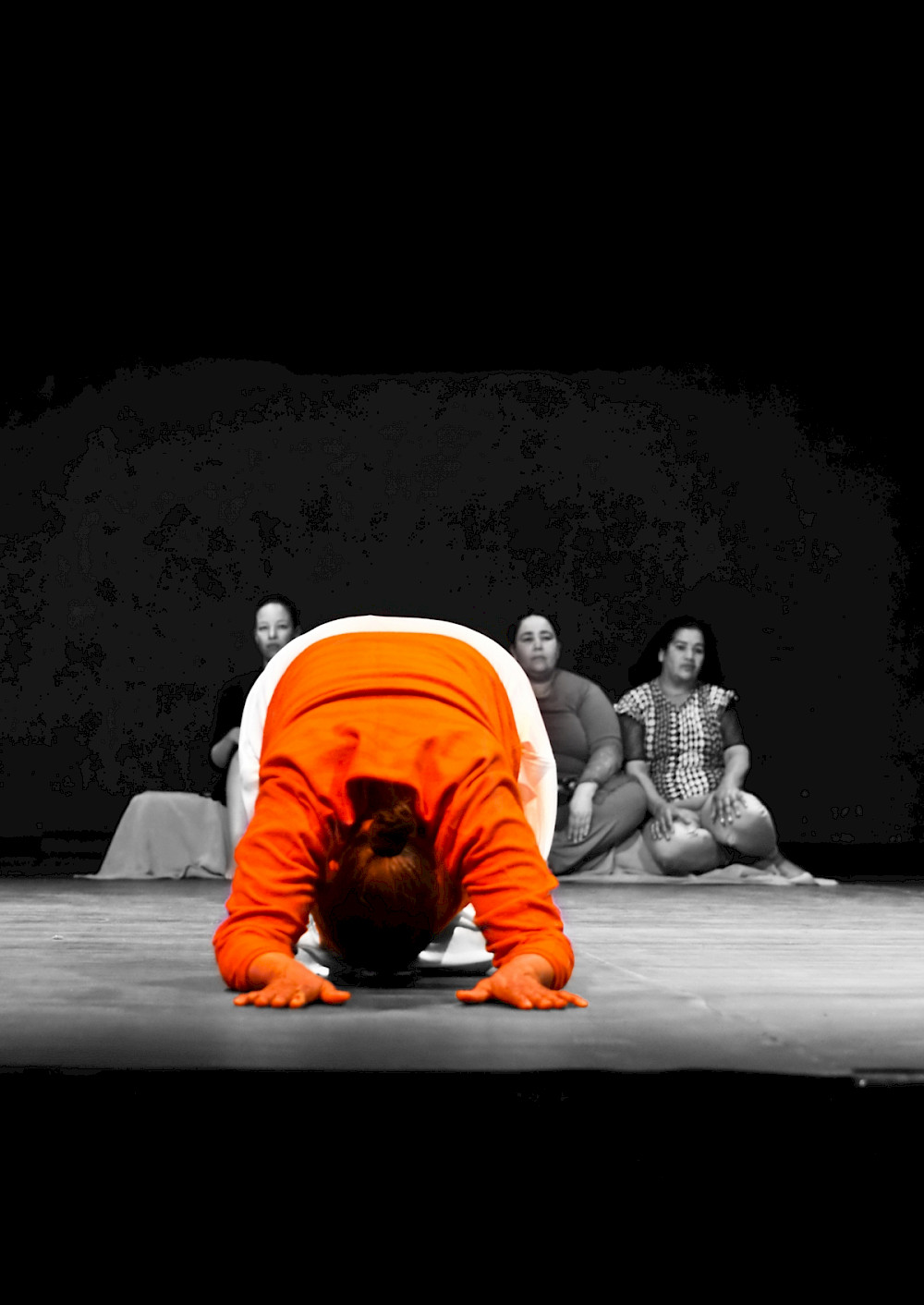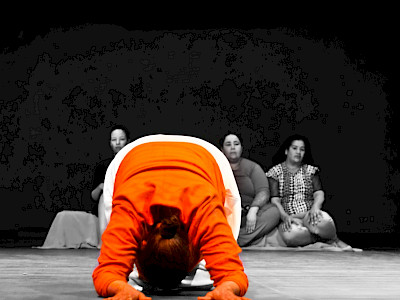22 — 24.05.2011
Madame Plaza is the name of the oldest cabaret in Marrakech. Using entrancing songs, fado and Moroccan blues, choreographer Bouchra Ouizguen pays homage to the ‘Aïtas’ who have been officiating there for over a century. These mistresses of a musical, poetic and popular art form that translates people’s pleasures and pains are often compared to Japanese geishas: though admired for their strong voices and sensual movements, they are ostracised by their families and society. Inviting three Aïtas to join her, Ouizguen offers us a show that compares different visions of the art. In her opinion, these performers embody a feminine approach to artistic creation and a life of freedom, but one of invisibility too. Slowly evolving in the intimacy of a closed space, the performers sing with their whole bodies. Allowing intimate sensory impressions to emerge, subtle lighting and minimalist movements endow these women – guardians of a rich past – with an intense physical presence. Ouizguen takes a contemporary look at a vanishing tradition with intelligence and sensitivity.
What bodies can do
What is extraordinary about a body sprawling on a sofa? Nothing. What is extraordinary about a person’s head appearing to fall backwards, as if being drawn towards the ground? Practically nothing. And yet in Madame Plaza these poses become extraordinary. Because Madame Plaza originates in a huge shift in time and space. It is condensed into a special moment, experiencing in the here and now pure presences that have been crystallised in a suspended intensity, somewhere between dance and performance.
Three Moroccan Aitas perform in it, accompanied by Bouchra Ouizguen who could be their daughter: totally different, but infinitely close and in tune. These Aitas are cabaret artists. Singers, as a matter of fact. Not dancers. “Madame Plaza” is an old nightclub that is still open in Marrakech, where Bouchra Ouizguen lives. She is a choreographer. Contemporary. Inspired by her training in and exchanges with the west. But as a young girl, she did oriental dance for a long time.
There she put together her body which she then wanted to take apart in order to achieve a more modern expression. Currently, continuing along this same path, Bouchra Ouizguen is back to explore this other body she initially inhabited. Explore it, appreciate it, bring it into play, confront it. A body is built. A body has a story. A body is full of culture. It is conjugated from the private and the collective. There is nothing stable about it. It participates in a construction of identity which is equally problematical, made from exchanges and evolutions.
This is what is being performed on stage in Madame Plaza: a kind of encounter, going towards rather than coming from somewhere, in keeping with the unknown rather than the known. The process of moving towards the other creates a shift here in the angle of observation: this has to happen to eliminate the notion of categories. For many long weeks, in the early stages of what is not intended to be a “show”, the four artists do not devote themselves to rehearsing so much as take the time to live together first, discover one another and modify their expertise.
The Aitas are different, but contemporary, urban. Layer by layer, in poses, postures and gesticulations, their monumental bodies quiver with a story of women whose singing can electrify their male audience’s sensuality: one moment being fêted as divas before being rejected as quasi prostitutes. Bouchra Ouizguen’s artistic observation will have been to reveal what else these bodies have to say that is different from what they usually perform in cabaret, this time living through themselves rather than for their voice alone. And so allowing themselves incredible fantasies, rolling about on the ground or imitating men. Madame Plaza reveals the unsuspected.
Bouchra Ouizguen’s choreographic work will have been about allowing this encounter, orchestrating it, inventing its particular space-time, and then showing what these bodies can do. Confronted with so many movements, the hope is that the western spectator will welcome the strangeness of these gestures. And then admit, in this incredible moment, that like any other, the body of a Moroccan woman is bursting with meaning and is about so much more than the obsessive fixation on the issue of wearing a veil. Before it moves on to be welcomed elsewhere.
Choreography
Bouchra Ouizguen
Performed by
Fatima El Hanna, Fatima Ait Ben Hmad, Bouchra Ouizguen, Naima Sahmoud
Music
Ahat by Youssef El Mejjad, Akegarasu by Shin-nai
Light design
Yves Godin
Costumes
Nouredine Amir
Lighting
Thalie Lurault
Presentation
Kunstenfestivaldesarts, Halles de Schaerbeek, Daarkom
Production
Compagnie Anania (Marrakech)
Coproduction
Fabbrica Europa (Firenze), Montpellier Danse 2009
Supported by
Service de coopération et d’action culturelle de l’Ambassade de France a Rabat, Département Afrique et Caraibes en créations de Culturesfrance – Ministere des Affaires étrangeres, École Supérieure des Arts Visuels de Marrakech, Institut français de Marrakech


